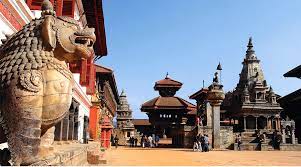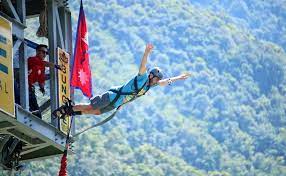Located at an altitude of 4130m, the Annapurna Base Camp trek is one of the most renowned and beautiful trekking adventures in Nepal after of course, the Everest base camp trek. The Annapurna Base Camp trek is not considered the most difficult trek, this is an adventurous trek and the key to completing this adventure is to walk slowly and steadily.
Hence, the Annapurna Base Camp trek difficulty level is often regarded as moderate. Since the Annapurna base camp trek is a demanding trek, it requires loads of patience. It is still an enjoyable and achievable trekking adventure.
The difficulties and challenges that you might encounter on the trail only add up to this enthralling adventure and the flabbergasting scenery of the landscapes and glorious mountains keeps you going and leaves you craving for more. This moderately difficult trek in Nepal is one of the most loved adventures.
Annapurna Base Camp Difficulty
The answer to this question depends on each individual as well as their prior trekking experiences. Almost all the trekking trails in Nepal includes rocky paths and lower oxygen at higher elevations, this causes stress to any trekker.
However, as compared to any other trekking destination in Nepal, this is a comparatively easier, and shorter trek that is located at lower elevations. If you are determined and physically fit, it is gonna be a lot easier for you.
Hence, The Annapurna base camp trek is one of the many trekking trails in the Himalayas.
It is an enthralling and daring adventure but not that challenging. Moreover, it is a moderate-level trek. Most trekkers attempt this trek as their first Himalayan trek, the scenery is spectacular and will surely bring the tears of joy upon completion.
Hypothermia And FrostBite
The Annapurna base camp trek takes you to the base of the 10th-highest peak in the world. The mountainous region in Nepal is rather cold. The weather worsens as you ascend further. High altitudes have quite erratic weather conditions. They receive heavy snowfalls and storms all the time. So, worries regarding frostbite and hypothermia are quite common.
Hypothermia is a medical condition in which a person receives less body heat than they lose. This heat exchange causes a significant temperature drop in your body. Symptoms of hypothermia include; shivering, confusion, memory loss, fumbling, and so on. This condition could develop due to several other pre-existing difficulties like; hunger, dehydration, exhaustion, etc.
Frostbite is a comparatively less frequent occurrence in the Annapurna base camp trek. Frostbites occur upon exposure to a very cold temperature as they attack the tissues and skin. They typically occur in externally exposed body parts like; the chin, ear, nose, toes, fingers, and so on. In extreme conditions, you might lose your organ to frostbite.
Hence it is crucial to take the necessary precautions to protect yourself from Hypothermia and frostbites.
Weather-Related Issues
Did you know that the trekking trails in Nepal are jam-packed in certain seasons and barren in others? This is due to the fact that the seasonal window allows for the best trek in Nepal. These seasonal windows are categorized based on the weather and climate; i.e. during spring and autumn.
Spring and Autumn are the best time for Annapurna base camp trek due to the favorable temperature and weather. These seasons do not invite rainfall or snowfall that results in a dry trekking trail. A dry trekking trail is much easier and prevents accidents and falls. Spring and Autumn offer a clear view of the blue skies. Hence, the views are also more enchanting.
Whereas, winters and monsoons are the exact opposite. The heavy monsoon rain and the winter snowfall make the trekking trail difficult. The wet and slippery trail can cause accidents. You need excessive precautionary gear and tools to tackle such weather conditions.
The freezing weather during the winters in the Khumbu region should not be taken lightly because it might result in hypothermia and trigger other health issues as well. So, if the Annapurna base camp trek is planned in the proper season, then the difficulties can be easily eradicated.
Seasonal Difficulties
As we discussed earlier, trekking during the off-season brings numerous challenges. However, the peak trekking season is also not fully hassle-free. During the peak trekking season the number of trekkers spikes up and the trails are pretty overcrowded. This could be a good opportunity to socialize. But from the point of view of good accommodation facilities and a quality trekking experience, this crowd could be a red flag.
Getting your hands on accommodation and even flight tickets can get quite difficult during the peak season. Also, the overcrowded route makes the trek less joyous and more irritating.
However, these issues can be eliminated by acting more quickly. Booking flights and lodges beforehand can save you from this hassle.
If you have no other option then you can also sleep on the teahouse communal dining space’s floor as well.
Altitude Sickness
The major issue and the trouble of trekking in the Himalayas is the Elevation affliction. The oxygen levels and the barometrical weight at higher elevations are comparatively lower than the ocean levels.
With a slender oxygen degree at higher altitudes, it will take more effort to acclimatize to the general condition at such elevation. Due to an Elevation ailment, you may suffer the side effects like; loose bowels, sickness, loss of appetite, sleep deprivation, and so on.
Higher elevations might be a mild issue for some, while it might be vital for others. If you notice manifestations of this elevation ailment then you must promptly return to the lower-height district.
Make sure you don’t dismiss these side effects early on, otherwise, it may result in more complex issues while leaving at higher altitudes. Our trek starts from the city of Lake “Pokhara” at an altitude of 1400m from sea level. We recommend you climb for a couple of hours each day so your body gets used to the slow height increment. Having warm soups, and keeping a healthy eating regimen will help you in limiting the dangers of elevation affliction.
Our experience journeying begins from the lake city “Pokhara,” which is at the height of 1400 meters from ocean level. It would help if you traveled up to 4130 meters towards Annapurna Base Camp in a couple of days.
We recommend you not drink liquor at higher altitudes. Even though some medications are accessible at higher altitudes, we recommend you take proper rest and take proper precautions rather than using medications.
Injury
If you are not used to long hikes, then you will be prone to get minor injuries during a long trek. Injuries like; sprains, strains, and blisters are common on the Annapurna base camp trek. These injuries occur when you put a lot of strain on your body and especially the legs.
If these injuries get severe, it is better if you rest until it heals. You can also prevent such injuries if you take slow walks. Being cautious can save you from the Everest base camp trek difficulties.
Oxygen Deficiency
The oxygen saturation in the air drops as you ascend further in higher altitudes. Oxygen deficiency is a vital problem that might arise during mountain expeditions and treks. You must carry supplemental oxygen if you are climbing eight-thousanders. It is difficult to survive a mountain climb without an oxygen tank.
However, oxygen deficiency is not a raging issue in the lower trekking trails of the Annapurna base camp trek. But, this does not imply that you should negate this issue. Especially if you are prone to shortness of breath, you must ensure supplemental oxygen. Even though the base camp routes are not as high, trekkers need to trek up to above 4000 meters.
Tips to Overcome Annapurna Base Camp Difficulties
Here are some tips that might come in handy for you if you are planning on trekking to the Annapurna base camp.
- Make sure you take as much rest and breaks while walking and always keep a slow pace.
- Drink plenty of water and focus on staying hydrated throughout
- Avoid alcoholic beverages and smokes while trekking
- Exercise a lot, prior to the trek to build up your stamina and endurance.
- Beware of the quality of food that you consume and the drinking water
- Also, don’t forget that acclimatization is the key to a successful Annapurna base camp trek, so be sure to acclimatize properly.
- Stay alert about the quality of food and water.
Conclusion
If you have a strong determination of trekking in the Himalayas of Nepal, explore the serenity, diverse flora and fauna, and embark upon an enthralling adventure, far away from the crowded city life then the trip to the Annapurna Base Camp is an ideal choice for you. It is one of the most loved and beautiful trekking destinations in Nepal.
Did you know that more than 35000 people take the trip to the Annapurna base camp? The key factors required to face the difficulties and problems of this trek are; preparedness, and walking slowly and steadily despite any difficulties. The major motivating factor is witnessing the close view of the world’s 10th-highest mountain.
The idea of witnessing, flabbergasting view of the majestic Annapurna mountain keeps you going despite the hardships. This is the main reason why this moderately difficult trek is the most famous one.
You Might Be Interested In-




